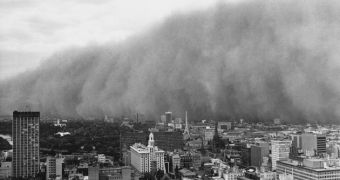According to the conclusions of a new report published in the January 19 issue of the top scientific journal Nature Climate Change, it would appear that the frequency of powerful warming events known as El Niños will double this century, as a direct result of increasing carbon dioxide emissions.
These events usually develop in the eastern equatorial region of the Pacific Ocean. The recent study focused on the most severe instances of the phenomenon recorded to date, such as the 1997-1998 event.
The latter was demonstrated in a new study to be the main reason why global warming has been stalling over the last 14 years. Climatologists say that the extra atmospheric heat is stored in the ocean, and that it will be released over the next few years, leading to accelerated warming worldwide.
At this point, both El Niños and their associated opposite phenomena, La Niñas, are considered to be of moderate intensity. As global warming becomes increasingly severe, the frequency and magnitude of these related phenomena is expected to increase substantially by the end of the century.
“The present day’s moderate El Niño becomes an extreme event in the future,” explains climate modeling expert Wenju Cai, who is also the lead author of the Nature paper. The expert is based at the Commonwealth Scientific and Industrial Research Organization (CSIRO), in Aspendale, Australia.
For this study, experts used 20 different climate models, 50 percent of all such models available today, to investigate rainfall patterns in the eastern side of the Pacific Ocean. The research focused on two periods, a control set of years (1891 to 1990) and a predictions set (1991-2090).
El Niño events decreased in number during this period, but their intensity increased, as did the frequency of such increases. At this time, one major El Niño event occurs once every 20 years. By 2090, major events could occur once every 10 years, 17 out of the 20 models surveyed showed.
“I’ve been at this long enough to know that you have to look at everything five times before you are entirely convinced, but I like the paper. It’s a very promising analysis,” comments climate scientist and ocean-atmosphere interactions expert Davin Neelin, who is based at the University of California in Los Angeles (UCLA).
Studying El Niño events is very important because the 1997-1998 phenomenon is responsible for billions of dollars in damages, and thousands of deaths, around the world, primarily due to the abnormal weather patterns it caused, Nature News reports.

 14 DAY TRIAL //
14 DAY TRIAL //